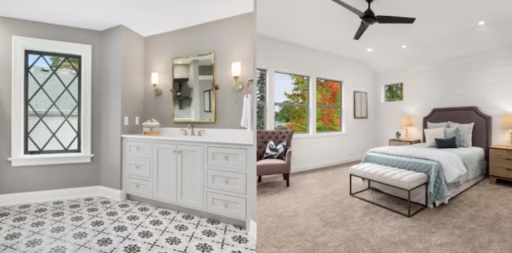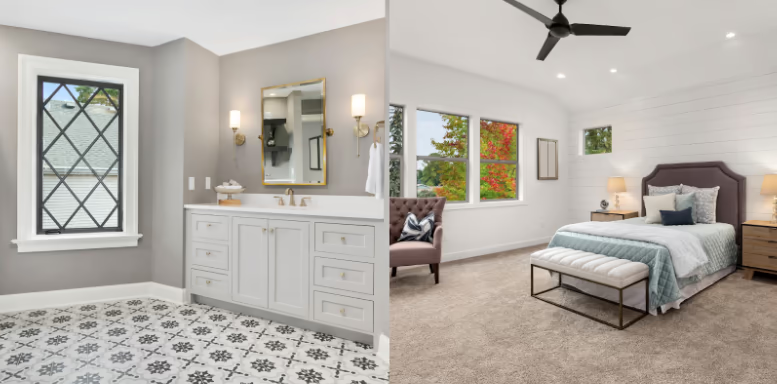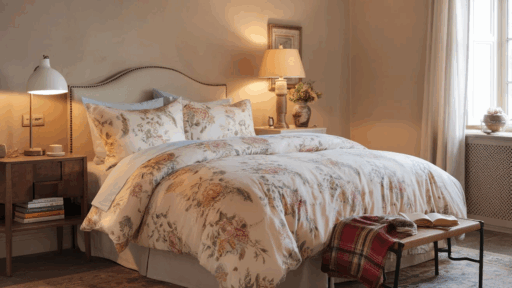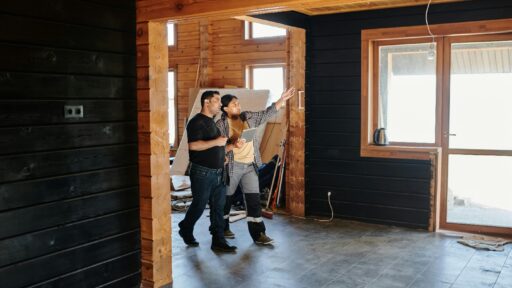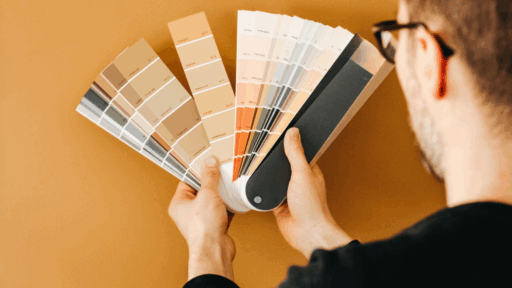Choosing floor tiles may seem like primarily an aesthetic choice at first glance, but the truth is that this minor decision can drastically alter how you live at home as well.
The two main flooring options you can pick include carpet and tile. Besides the difference in looks, the texture and upkeep of these distinct flooring types can vary quite significantly.
There’s no one-size-fits-all flooring option, as each has its pros and cons. However, depending on your lifestyle, one could be slightly or significantly better than the other for your specific needs.
If you’re unsure which flooring option to pick for your lifestyle, then you’re in the right place. We’ll give you a rundown on the different attributes of carpet and tile flooring—and hopefully help you narrow your choice to the one that suits your needs best.
Let’s jump right into it.
What is the Difference Between Carpet Flooring and Tile Flooring?
There are a few core differences that set carpet flooring and tile flooring apart.
Carpet flooring is a synthetic type of flooring known to provide a softer underfoot experience when stepped on. This is because this flooring type is made from a pile containing multiple dense fibres like nylon, polyester, and wool. Below the pile is a backing, or the underside of the carpet, that secures and stabilises it in place.
Conversely, tile flooring is made from hard materials like stone and ceramic. Its surface is fired at high temperatures of 1200°C, then dried, resulting in a dense and durable finish that’s hard and resistant to scratches, heat, and moisture. Tiles may also be processed further, like glazed or coated, for added beautification. The resulting tile is resilient, cool, and hard.
As seen, there’s a notable contrast not just in how each flooring type feels underfoot, but also in how they perform in different environments. In the next section, we’ll explore which flooring option is better suited for specific lifestyles, spaces, and practical needs, helping you make a more informed and confident choice.
When to Choose Carpet Flooring?
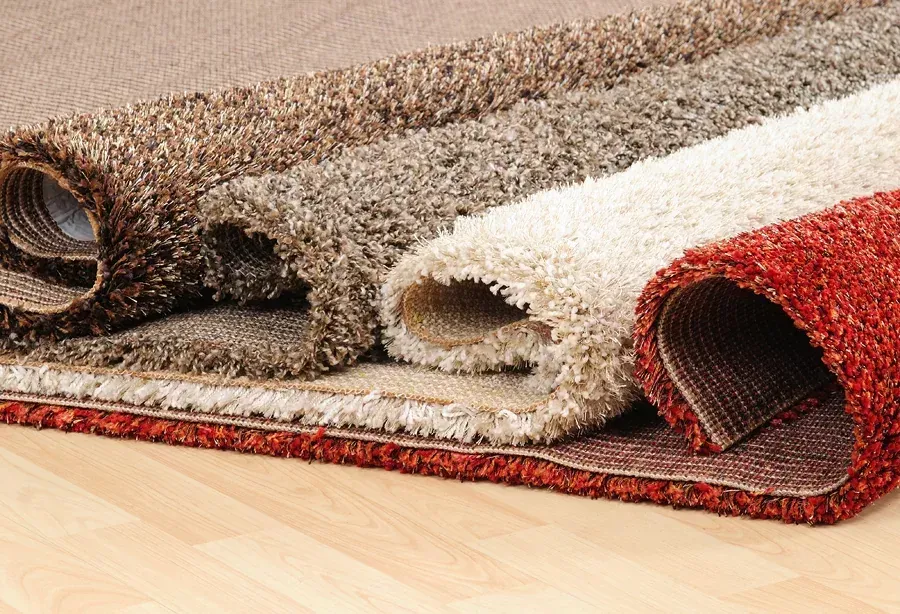
There are several types of carpet flooring from Choices Flooring that you can use to cover your room’s surface. Here are some signs you may benefit from covering your flooring with carpets.
You Want Your Interior to Exude Warmth and Softness
Carpet flooring is a great match for households that want to exude a warm and soft interior. Carpets are naturally made from plush material, which can make spaces feel more comfortable and easy to relax in.
On top of that, carpets also come in a wide range of colours, patterns, and designs, making it easy for people to find the perfect fit to coordinate with their existing furniture pieces to create a nice and cosy interior.
Moreover, carpet’s soft and grippy texture also helps minimise the impact and likelihood of falls, making the space feel safer for everyone living in the household. It also makes it easier for people to walk around barefoot, creating a nice, plush, and comfortable underfoot sensation when walking from place to place within the household.
You Want a Cosy Underfoot
If you want to feel a nice, bouncy, and cushioned return when stepping over your home’s floors, then installing carpet floors is a no-brainer. This floor type is distinct from others due to its plush underfoot, making walking over it feel easy, cosy and painless.
Carpets can also be adjusted at a certain height level or material type, making it easy for homeowners to customise their space the way they want.
On top of a cosier walking experience, carpet flooring can also repurpose spaces into inviting zones for lounging, playing, or relaxing, transforming bare floors into soft, multifunctional areas. This dual-purpose can help homeowners maximise their home’s space without needing much investment.
You Want Peace and Quiet
Carpet flooring can be an effective noise minimiser for households. Its dense, fibrous properties can absorb sound and reduce the reverberation and echoes that may bounce back to the walls and ceilings.
This enhanced noise reduction allows people to go about their daily chores more silently, from walking from place to place to performing tasks in the kitchen. This reduced sound can extend over to other rooms as well, reducing the audible sounds and vibrations felt from noises made in the floors and rooms adjacent to yours.
This noise reduction is especially evident in large rooms. So if you’re someone who enjoys their peace and quiet, or is a light sleeper, carpet flooring can be an ideal flooring type in bedrooms to help create a quiet indoor experience.
You Have Young Children and Seniors at Home
Carpet floors are a great safety enhancer for most modern households. The cushioned surface of carpet flooring helps absorb impact, making slips and falls less likely to cause serious injury, especially when compared to harder materials like wood or tile.
For households with children and seniors, who are prone to such accidents, a carpet floor can provide better grip and traction to reduce the chances of slips from ever occurring. And if an accident does occur, the plush underfoot will at least remain a bit forgiving and may not result in injuries too drastic to overcome.
You Want to Reduce Your Electricity Bills
Carpet flooring comes with an often-overlooked benefit, and that is its insulating and heat-retaining effects. The dense fibres found in carpets can absorb heat in the household easily, creating a warmer indoor temperature even if the outdoor temperature is cold.
This naturally warm interior means that your home’s temperature-regulating appliances like heaters won’t have to work as hard to maintain a comfortable temperature in the household. This, ultimately, will result in lower electricity bills.
When to Choose Tiles?
If you prioritise durability, easy upkeep, and moisture resistance, tile flooring might be a better fit for your household. Below are key scenarios where tile flooring is the more practical and efficient choice for your home.
You Live in a Warmer Climate
Tiles tend to retain the temperature of the air surrounding it. If it gets too cold, like during the early mornings, then the tiles can be quite uncomfortable to step on.
However, this quality can be advantageous in warmer climates. Carpets can be too insulating in warmer climates, retaining heat to the point that it gets too stuffy inside a room. Tiles can disperse heat more easily, allowing it to escape through open windows and gaps.
Furthermore, A/C units are typically constantly turned on in warmer climates. The hard properties of the tiles make it easy to maintain a cold environment throughout the day, making homes feel like a cool refuge during hot days.
You Prefer A Modern Aesthetic
Carpets can be quite old-school for some tastes. If you prefer your home to look classy, sleek, and modern, then tiles are the premier choice for the job.
Tiles come in a variety of finishes, making it fairly easy to find a suitable design for any home style, whether you’re going for a natural and cottage-inspired look or a more tech-inspired modern room style. In any case, a couple of popular tiles include glossy, matte, and textured styles, to name a few.
Unlike rustic and carpet flooring materials, tiles are classy and can be easily integrated into multiple modern house ideas. So if you want to go the modern route, then tiles are the way to go to introduce a sense of modernity in your home’s flooring.
You Want Your Room to Be Moisture-Resistant
Carpets come with one major disadvantage—and that is their absorbent nature.
In rooms that tend to collect high amounts of humidity, like kitchens, bathrooms, and laundry rooms, water exposure can cause carpet flooring to constantly become moist and even harbour bacteria and mould over time. This can be a major health hazard if left unchecked.
On the other hand, tiles, particularly vinyl tiles that have been properly sealed and grouted, can hold up on their own even if exposed to wet conditions for a long period. This quick-drying effect makes this tile type easy to clean and maintain.
As such, if you want to reduce clean-up time, then tiles may be ideal in areas that get wet easily and fast.
The Room Expects Heavy Foot Traffic
In areas of the home that expect a lot of foot traffic, such as the living room and entryway, tiles are considered the superior flooring for a number of reasons.
For one, tiles are tougher and more durable than carpets. They can withstand thousands of steps without needing much upkeep. They’ll still retain their appearance, too.
Secondly, tiles are easier to clean and maintain. They simply need to be mopped once, and they’ll look good as new. Carpets, on the other hand, may need more extensive cleaning or would even need to be steam cleaned at a professional store, which can keep them out of commission for days.
In any case, tiles are a good way to ensure that a place with heavy foot traffic continues to operate and look fresh with as minimal downtime as possible.
We hope this breakdown is enough to help you choose the best flooring style for your next renovation project!

